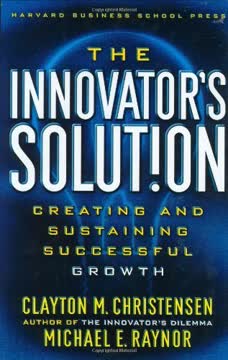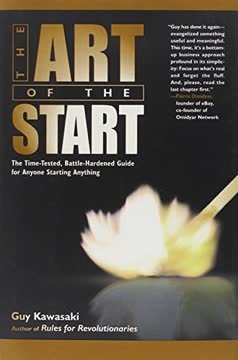Key Takeaways
1. Visual thinking is a powerful problem-solving tool accessible to everyone
"If you were able to walk into this room this morning without falling down, I guarantee that you're enough of a visual person to understand everything that we're going to talk about and to get something useful out of it."
Everyone can think visually. Despite common beliefs, visual thinking is not limited to artistically inclined individuals. It's an innate ability we all possess, rooted in our evolutionary need to process visual information for survival. This skill can be harnessed and improved upon for problem-solving in various contexts, from business to personal life.
Visual thinking transcends drawing skills. The focus is not on creating aesthetically pleasing artwork, but on using simple visual elements to clarify thoughts, uncover hidden connections, and communicate ideas effectively. Even rudimentary sketches can spark insights and facilitate understanding in ways that words alone cannot.
Benefits of visual thinking:
- Clarifies complex concepts
- Reveals hidden patterns and relationships
- Enhances memory and recall
- Facilitates communication and collaboration
- Stimulates creativity and innovation
2. The four-step visual thinking process: Look, See, Imagine, Show
"Visual thinking means taking advantage of our innate ability to see—both with our eyes and with our mind's eye—in order to discover ideas that are otherwise invisible, develop those ideas quickly and intuitively, and then share those ideas with other people in a way that they simply 'get.'"
Look: This initial step involves gathering visual information without judgment. It's about taking in the entirety of what's before you, whether it's a physical environment, a set of data, or a complex problem. The goal is to collect as much raw visual input as possible.
See: In this stage, you begin to make sense of what you've gathered. It involves recognizing patterns, identifying relevant information, and discerning what's important from what's not. This is where your brain starts to organize the visual input into meaningful structures.
Imagine: This is the creative heart of visual thinking. Here, you manipulate the visual information in your mind, rearranging elements, making new connections, and envisioning potential solutions. It's about seeing possibilities that aren't immediately apparent.
Show: The final step involves externalizing your visual thoughts. This could be through sketches, diagrams, or any other visual representation that communicates your ideas to others or clarifies them for yourself.
3. The SQVID: A framework for activating visual imagination
"By forcing ourselves to look at our idea from every point on the SQVID, a fascinating thing happens, with an equally fascinating outcome: We fully activate both the left ('analytic') and right ('creative') sides of our brain."
SQVID stands for:
- Simple vs. Elaborate
- Quality vs. Quantity
- Vision vs. Execution
- Individual vs. Comparison
- Delta (Change) vs. Status Quo
This framework serves as a mental exercise to explore different aspects of an idea visually. By considering each of these dichotomies, you force your brain to look at the problem from multiple angles, often leading to unexpected insights.
Using the SQVID:
- Start with your core idea
- Run it through each of the five SQVID questions
- Sketch or imagine different visual representations for each answer
- Observe how your understanding of the idea evolves and deepens
The SQVID helps bridge the gap between analytical and creative thinking, making it a powerful tool for comprehensive problem-solving and idea development.
4. The <6><6> rule: Six ways of seeing and six corresponding ways of showing
"For every one of the six ways of seeing, there is one corresponding way of showing."
The six ways of seeing:
- Who/What
- How Much
- Where
- When
- How
- Why
The corresponding ways of showing:
- Portrait
- Chart
- Map
- Timeline
- Flowchart
- Multiple-Variable Plot
This rule provides a systematic approach to visual thinking by aligning how we naturally process visual information with how we can effectively communicate it. By matching the type of information with the appropriate visual format, we can create more intuitive and impactful visual representations.
Benefits of the <6><6> rule:
- Simplifies the selection of appropriate visual formats
- Ensures clarity and effectiveness in visual communication
- Aligns with natural cognitive processes for easier understanding
- Provides a comprehensive toolkit for addressing various types of problems
5. Portraits and charts: Visualizing who/what and how much
"If we can scrawl out the following (regardless of how ugly you find your results), you're guaranteed to become a better visual thinker."
Portraits are used to represent the "who" and "what" of a problem. They focus on qualitative aspects and help identify key players, objects, or concepts. Even simple stick figures or basic shapes can effectively convey important information about roles, relationships, and characteristics.
Charts address the "how much" aspect, dealing with quantitative information. They come in various forms such as bar charts, pie charts, and line graphs. The key is to choose the simplest form that effectively communicates the data.
Tips for effective portraits and charts:
- Keep it simple: Focus on key identifying features
- Use labels to clarify meaning
- Incorporate relative size to show importance or quantity
- For charts, choose the format that best highlights the key comparison or trend
- Always include a clear title and legend if necessary
Remember, the goal is not artistic perfection but clear communication of ideas and data.
6. Maps and timelines: Illustrating where and when
"Everything has a geography."
Maps in visual thinking go beyond geographical representations. They can illustrate relationships, hierarchies, and conceptual spaces. Whether it's an organizational chart, a mind map, or a process diagram, maps help us understand the "where" of our problem or idea.
Timelines address the "when" aspect, showing progression, duration, and sequence of events. They can be linear or cyclical, depending on the nature of the time-based information being represented.
Key considerations for maps and timelines:
- Establish clear coordinates or reference points
- Use spatial relationships to show connections or hierarchies
- For maps, start with the most prominent feature and build outward
- For timelines, maintain a consistent scale and direction (usually left to right)
- Use visual cues like size, color, or shape to highlight important elements
- Include legends or keys to explain symbols or abbreviations
Both maps and timelines excel at revealing patterns and relationships that might not be apparent in textual or numerical formats.
7. Flowcharts and multiple-variable plots: Demonstrating how and why
"Visual thinking is an extraordinarily powerful way to solve problems, and though it may appear to be something new, the fact is that we already know how to do it."
Flowcharts illustrate the "how" of a process or system. They show the sequence of steps, decision points, and potential outcomes. Flowcharts are particularly useful for analyzing and optimizing procedures or explaining complex processes.
Multiple-variable plots address the "why" by showing relationships between three or more variables. These complex visualizations can reveal insights that might be missed when examining variables in isolation. They're powerful tools for understanding underlying causes and making predictions.
Tips for effective flowcharts and multiple-variable plots:
- For flowcharts:
- Use standardized symbols for different types of steps
- Ensure a clear start and end point
- Keep the flow moving in one general direction
- For multiple-variable plots:
- Start with the most important variables
- Use size, color, or shape to represent additional variables
- Include a clear legend explaining all variables
- Don't overcrowd the plot; focus on key relationships
Both these tools excel at revealing complex relationships and causalities, making them invaluable for deep problem-solving and decision-making.
8. Effective presentation of visual ideas through "Show-and-Tell"
"Everything I Know about Business I Learned in Show-and-Tell"
Presenting visual ideas is a skill. It's not enough to create insightful visual representations; you must also be able to guide others through your thought process. This involves a return to the four-step visual thinking process: Look, See, Imagine, Show.
The Show-and-Tell process:
- Look: Describe the overall picture and its components
- See: Point out the most important elements and patterns
- Imagine: Discuss potential implications or scenarios
- Show: Summarize key takeaways and next steps
Tips for effective visual presentations:
- Practice explaining your visual before the actual presentation
- Start with the big picture before diving into details
- Use storytelling techniques to engage your audience
- Encourage interaction and questions
- Be prepared to sketch additional elements in real-time if needed
Remember, the goal is not just to display your visual but to guide your audience through your thinking process, helping them arrive at the same insights you've discovered.
9. The visual thinking toolkit: A Swiss Army knife for problem-solving
"Picture visual thinking as the Swiss Army knife of problem solving. It has several different blades to help visually solve almost any kind of problem, but they follow a simple pattern so it's easy to remember what they all do."
The visual thinking toolkit consists of:
- Three basic tools: Eyes, mind's eye, and hand-eye coordination
- Four-step process: Look, See, Imagine, Show
- Five SQVID questions
- Six ways of seeing and showing
This toolkit provides a comprehensive approach to visual problem-solving that can be applied in various contexts. By internalizing these components, you can quickly access the right tool for any given problem.
Benefits of the visual thinking toolkit:
- Versatility: Applicable to a wide range of problems
- Portability: Can be used anytime, anywhere
- Simplicity: Easy to remember and apply
- Effectiveness: Combines multiple cognitive approaches for comprehensive problem-solving
By mastering this toolkit, you'll be equipped to tackle complex problems, generate innovative ideas, and communicate more effectively in any situation.
Last updated:
FAQ
What's "The Back of the Napkin" about?
- Visual Problem Solving: The book by Dan Roam focuses on using simple drawings to solve complex problems and communicate ideas effectively.
- Visual Thinking Process: It introduces a four-step process: look, see, imagine, and show, to harness visual thinking.
- Practical Application: The book provides tools and frameworks to apply visual thinking in business contexts, making it accessible to anyone, regardless of artistic ability.
Why should I read "The Back of the Napkin"?
- Enhance Communication Skills: It offers techniques to improve how you convey ideas visually, which can be more effective than words alone.
- Problem-Solving Approach: The book provides a structured method to tackle complex problems using visual tools.
- Broad Applicability: Whether you're in business, education, or any field requiring idea sharing, the book's concepts are universally applicable.
What are the key takeaways of "The Back of the Napkin"?
- Visual Thinking Process: The four-step process (look, see, imagine, show) is central to solving problems visually.
- SQVID Framework: A tool to explore different visual perspectives of an idea, enhancing creativity and clarity.
- Six Ways of Seeing: Understanding problems through who/what, how much, where, when, how, and why helps in creating effective visual solutions.
How does Dan Roam define visual thinking in "The Back of the Napkin"?
- Innate Ability: Roam emphasizes that visual thinking is a natural skill everyone possesses, not limited to artists.
- Problem-Solving Tool: It involves using simple drawings to clarify and solve problems by making abstract ideas visible.
- Communication Enhancement: Visual thinking aids in sharing complex ideas in a way that is easily understood by others.
What is the SQVID framework in "The Back of the Napkin"?
- Five Questions: SQVID stands for Simple vs. Elaborate, Quality vs. Quantity, Vision vs. Execution, Individual vs. Comparison, and Delta (Change) vs. Status Quo.
- Mind's Eye Activation: It helps in exploring different visual representations of an idea, engaging both creative and analytical thinking.
- Audience Focus: The framework guides you to tailor your visual message to the needs and expectations of your audience.
How does "The Back of the Napkin" suggest using the six ways of seeing?
- Problem Breakdown: Roam suggests breaking down problems into who/what, how much, where, when, how, and why to see them clearly.
- Visual Frameworks: Each way of seeing corresponds to a visual framework, such as portraits for who/what and charts for how much.
- Comprehensive Understanding: This approach helps in understanding and addressing different aspects of a problem visually.
What are the four steps of the visual thinking process in "The Back of the Napkin"?
- Look: Collect visual information and establish a basic understanding of the problem.
- See: Identify patterns and select relevant visual inputs to focus on.
- Imagine: Manipulate visual patterns in your mind to explore new ideas and solutions.
- Show: Create and share visual representations of your ideas to communicate effectively.
How can "The Back of the Napkin" help in business presentations?
- Engage Audience: Using visuals can capture attention and make complex information more digestible.
- Clarify Ideas: Visuals help in simplifying and clarifying ideas, making them easier to understand and remember.
- Encourage Interaction: Hand-drawn images invite audience participation and feedback, enhancing engagement.
What are some practical applications of visual thinking from "The Back of the Napkin"?
- Business Strategy: Use visual tools to map out strategies and identify potential challenges and solutions.
- Team Collaboration: Enhance team discussions and brainstorming sessions with visual aids to align understanding.
- Sales and Marketing: Create compelling visual presentations to communicate value propositions and engage clients.
What are the best quotes from "The Back of the Napkin" and what do they mean?
- "Solving problems with pictures has nothing to do with artistic training or talent." This emphasizes that visual thinking is accessible to everyone, not just artists.
- "Any problem can be helped with a picture." Roam highlights the universal applicability of visual thinking in problem-solving.
- "The more we can rely on our built-in tools, the more we'll discover about our innate visual thinking abilities." This encourages leveraging natural visual skills for effective problem-solving.
How does "The Back of the Napkin" address common objections to visual thinking?
- "I'm not a visual person": Roam argues that if you can navigate a room without falling, you have enough visual ability to benefit from visual thinking.
- Complexity Concerns: The book provides frameworks to simplify complex ideas into understandable visuals.
- Drawing Skills: It reassures that artistic talent is not required; simple sketches are often more effective.
What resources does "The Back of the Napkin" provide for further exploration of visual thinking?
- Software Recommendations: Suggestions for digital tools to create visual representations, like Microsoft PowerPoint and Adobe Illustrator.
- Reading List: A bibliography of books on creative problem-solving, neurobiology, and visual exercises.
- Workshops: Information on attending Dan Roam's workshops for hands-on learning of visual thinking techniques.
Review Summary
The Back of the Napkin receives mixed reviews, with many praising its innovative approach to visual problem-solving and communication. Readers appreciate the book's emphasis on using simple drawings to convey complex ideas, finding it useful for business presentations and strategic thinking. Some criticize the writing style as verbose and the concepts as overly complicated. While many find value in the visual thinking techniques presented, others feel the book lacks practical examples and fails to deliver on its promise of simplifying communication through visuals.
Similar Books










Download PDF
Download EPUB
.epub digital book format is ideal for reading ebooks on phones, tablets, and e-readers.






